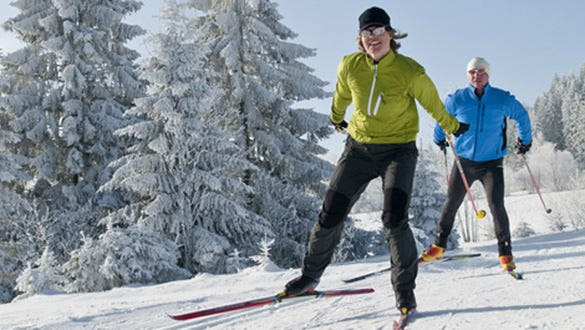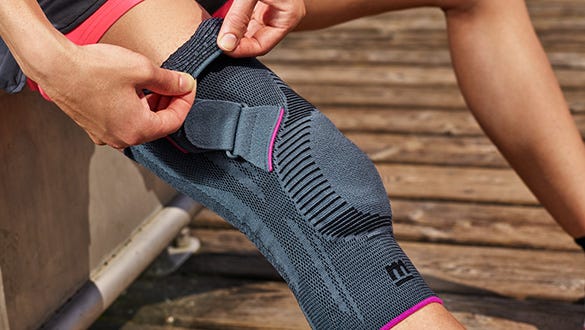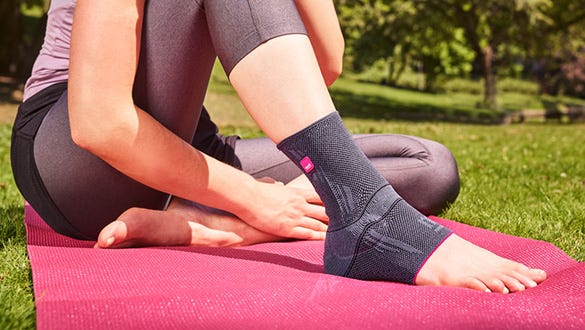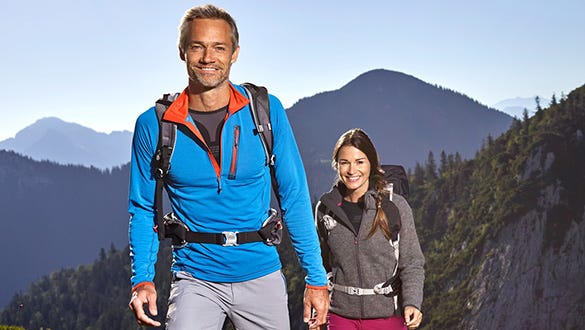- Free First Class Delivery
- Buyer Protection
- Secure Online Shopping
- Healthcare Professional? Click here
Travelling with an injury


Categories
Back to health more quickly after an injury
Most accidents happen at home or during leisure time (source: Federal Institute for Occupational Safety and Health) - over 65% to be exact. Up to two million amateur sportsmen and -women injure themselves every year.
They tear ligaments, bang their shins, pull their thigh muscles, fall victim to golfer's elbow or sprain their wrists. Injuries are sustained most often in ball games and Alpine skiing.
The good news: fewer and fewer injuries require surgery. Read on to find out which orthopaedic medical devices and conservative measures can get you back on the slopes or back on the ball quickly.
Preventing injuries
These precautions help you avoid accidents:
- Warm up well before playing and stretch your muscles. This improves the blood flow to the cartilage, which increases cartilage volume, thus enabling it to absorb impacts better.
- If you have already had a ligamentous injury or if one of your joints is unstable: wear a joint guard, a support or sport compression garments. These stabilise the joint and make sure it doesn't twist so easily.
- Don't overdo training or sports.
- Avoid repetitive incorrect use: make sure you wear safe footwear.
- Play somewhat more defensively.
- For winter sportsmen: skiing exercises make you fit for the first downhill ski run of the season.
The RICE rule
Every sports fan should know the RICE rules of first aid to minimise pain, swelling, redness and impaired joint function after a sporting injury.
R stands for Rest,
I for Ice (cooling),
C for Compression, and
E for Elevation.
Stop doing whatever you were doing and cool the affected area. This makes blood vessels constrict, so less fluid leaks into the tissues and the swelling stays minor. Cooling also suppresses the inflammatory reaction, keeps bruising local and makes the pain tolerable.
Then apply a pressure dressing to compress the site and elevate your arm or leg.
Supports and braces
Supports and orthoses are quick and practical to put on. The medical devices provide optimum relief and stabilisation for the affected areas, which is why they are often used to treat sports injuries.
medi's supports also have integrated massage pads where they are needed. The massage effect breaks down swelling, boosts the circulation and relieves the pain. Supports can also help bolster the locomotor apparatus and prevent protective postures.
For use: on land and in water
You can shower and even go swimming with some of the orthoses – both in the sea and in chlorinated water. It is very important that you clean your medical device in clean water afterwards and do not leave it in the sun to dry.
Please then spray the hinges with Teflon spray.
Soothing relief
There's an orthopaedic product from medi for almost every injured part of the body. The spectrum ranges from Epicomed for golfer's elbow, Genumedi for knee injuries, Levamed for a sprained ankle joint to Manumed active for hand injuries.
All our supports and orthoses share one thing in common: they integrate themselves harmoniously in your movements - like a second skin. Thus, you can stay on the move despite your injury. Your doctor will decide which medical device is most suitable for you.
To get back on your feet again quickly, you should stop playing the sport until you are able to go about your normal day-to-day activities symptom-free. You should also take advantage of all the available treatment options – as recommended to you by your doctor. Your doctor can suggest medical devices and prescribe pain-killers and send you to a physiotherapist. Electrotherapy and ultrasound treatment or classic physiotherapy also boost the body's regeneration and your injury will soon be just an anecdote.








